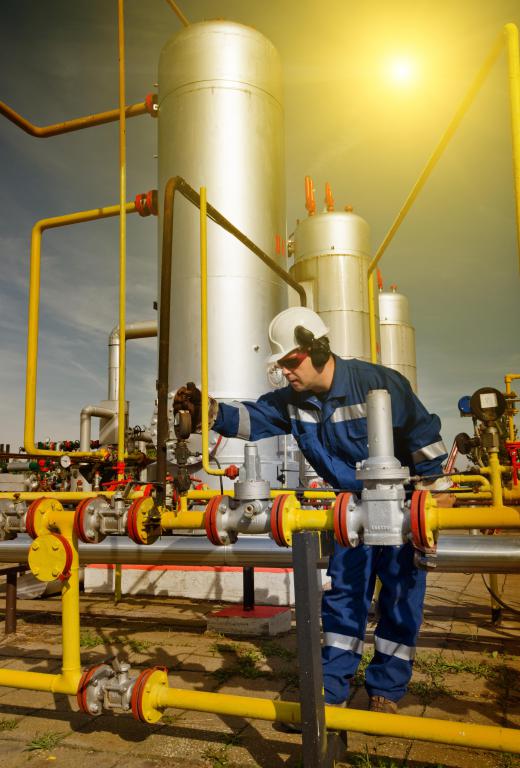A compressor station is a large facility that is an important part of the process of transporting natural gas from one place to another. Natural gas travels long distances through a network of huge pipelines &mdahs; to travel through this pipeline, the gas must be under pressure. Compressor stations are located at intervals along pipelines where the natural gas is pressurized in order to keep it moving. They actually pump the gas through the pipeline by compressing it at certain distance intervals.
When a pipeline is built, compressor stations are also constructed along the route, usually every 40 to 100 miles (64 to 161 km). The action of the compressor station is actually what moves the gas. As the station compresses the gas, it pushes it into a small space. This gives it a very high pressure as it leaves the station, and the gas moves by expanding through the pipe and relieving the pressure. When it arrives at the next station, it is back to a much lower pressure, ready to be compressed again in order to continue its journey.

A compressor station usually operates 24 hours a day, every day of the year, to keep natural gas moving. The average station is able to move up to 830 million cubic feet (23.5 million cubic meters) of natural gas. These stations have skilled workers operating the machinery and need to be monitored constantly by highly trained personnel. Monitoring is extremely important in order to ensure the safety of the workers and of the surrounding area since natural gas can be dangerous and explosive if mishandled.
The natural gas enters the compressor station at the suction header under low pressure. It then undergoes a cleaning process in liquid separators. Scrubbers, filters and strainers remove any impurities from the natural gas such as dirt particles or liquid from condensation. The natural gas needs to be in a gaseous state, but sometimes liquid condenses out of it from temperature changes. The liquid is collected and stored for proper disposal or possible sale.
From this point, the gas travels through the compressor station to the compressors, also known as pumps. The compressors are driven by engines that are known as prime movers. Turbines or electric motors can be used to operate centrifugal compressors, which compress the gas by spinning it at high speeds using a device such as a giant fan blade and then pushing it through a small exit pipe.
Another option is a reciprocating engine paired with a reciprocating compressor, which operates much like an enormous car engine. The gas is compressed by giant pistons in cylinder cases on one side of the engine. Once compressed and pressurized the natural gas exits the compressor station and continues its journey.
